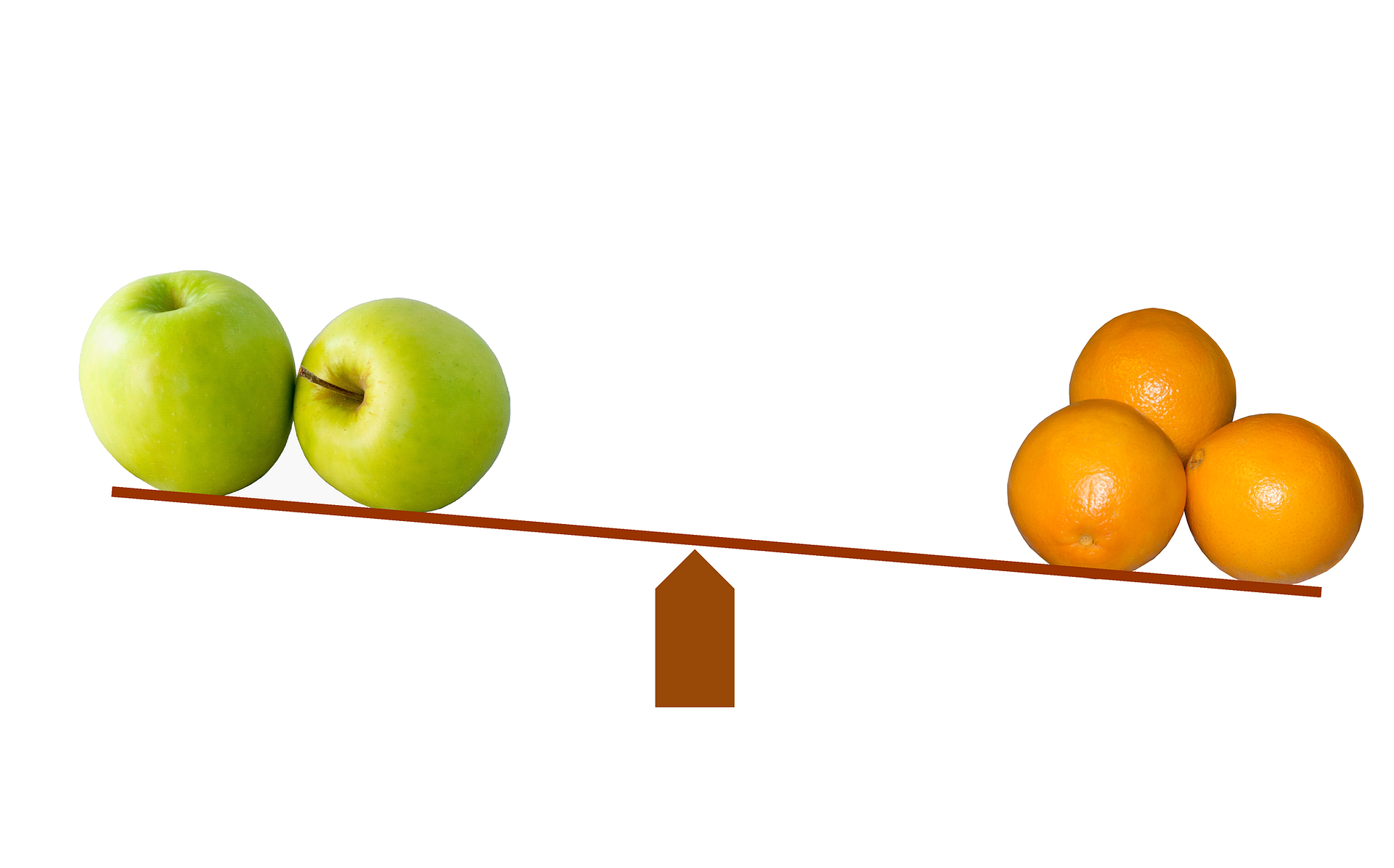Many idioms in English have flummoxed me since I started learning the language in middle school. But one tops the list: comparing apples and oranges. The first time I heard the phrase in my freshman year of college, it stopped me in my tracks. The conversation went something like this:
That’s like comparing apples and oranges.
So what?
You can’t compare the two!
Wait, what? What do you mean I can’t compare the two?
They’re too different.
[At this point, dear reader, you may want to turn around and look away. I’m about to compare apples and oranges].
They’re both fruits. They’re both round. They both have a slight tangy taste. They’re about the same size. And they both grow on trees.
Yes, there’s more that unites apples and oranges than divides them. (Scott Sanford of the NASA Ames Research Center took this comparison a step further. He used infrared spectrometry to compare a Granny Smith apple and a Sunkist orange and showed that the spectra of the two fruits are strikingly similar. The study, with the tongue-in-cheek title Apples and Oranges: A Comparison, was published in the satirical scientific magazine, Improbable Research.).
Yet, the idiom thrives because, as human beings, we’re terrible at seeing connections between seemingly dissimilar things, however minor their differences might be. Instead, we compare apples to apples and oranges to oranges. In our professional lives, we look to the competitors in our own industry and copy from their playbooks. In our personal lives, we adopt the fashion sense of our friends and echo their political views. We use idioms like apples and oranges to stop the comparison conversation before it even begins.
But to me, there’s little to be learned from comparing similar things. Breakthroughs happen when we see the similarity in the dissimilar and combine and recombine apples and oranges into a creative soup.
“Originality often consists in linking up ideas whose connection was not previously suspected,” wrote William Beveridge in his 1957 book, The Art of Scientific Investigation. Decades later, Steve Jobs echoed the same sentiment: “Creativity is just connecting things,” he said. “When you ask creative people how they did something, they feel a little guilty because they didn’t really do it, they just saw something.”
Albert Einstein called this idea “combinatory play,” which he believed is the “essential feature in productive thought.” Combinatory play, as Elizabeth Gilbert describes it, is the “act of opening up one mental channel by dabbling in another.” During moments of difficulty, Einstein would grab his violin and play Mozart to decipher the music of the cosmos. Steve Jobs borrowed from calligraphy to create multiple typefaces and proportionally spaced fonts on the Macintosh. Leonardo da Vinci’s inspiration for art and technology also came from the outside–in his case, nature. Larry Page and Sergey Brin adopted an idea from academia–the frequency of citations to an academic paper indicates its popularity–and applied it to search engines to create Google. In crafting his theory of evolution, Charles Darwin was inspired by the economist Thomas Malthus, who argued that populations tend to outgrow resources, creating a competition for survival. Darwin then began to ponder which populations are better situated than others to survive. In creating the printing press, Johannes Gutenberg was inspired by the equipment used for pressing wine grapes.
Great musicians also use combinations. Iron Maiden’s music combines the unlikely elements of Shakespeare, history, and heavy metal. The late David Bowie was a master at re-mixing. As David Moldawer writes, Bowie would “assemble chunks of text from various sources, cut them up, and rearrange them to forge lyrics with surprising and memorable combinations of words, images, ideas.” The legendary record producer Rick Rubin tells his bands not to listen to popular songs while they produce an album. Instead, he says that they’re “better off drawing inspiration from the world’s greatest museums than finding it in the current Billboard charts.”
But we can’t combine ideas if we don’t see the similarities between them. Most of us remain in our humanities track or science track and shut off our minds to concepts from across the aisle.
Life, it turns out, doesn’t happen in compartmentalized silos.
What’s ordinary in one field is extraordinary in the other. A revolution in one industry can begin with the adoption of an idea from another. Yes, in many cases, the fit won’t be perfect. But the mere act of comparison will spark new lines of thinking.
The next time someone accuses you of comparing apples and oranges, wear it as a badge of honor. And don’t stop with apples and oranges. If you’re a doctor, attend a conference for real estate professionals. If you’re an English major, learn about quantum mechanics. If your day job is an engineer, pick up a copy of Homer’s Odyssey.
When it comes to unleashing originality, nothing beats the cross-pollination of ideas from seemingly different places.
Bold


